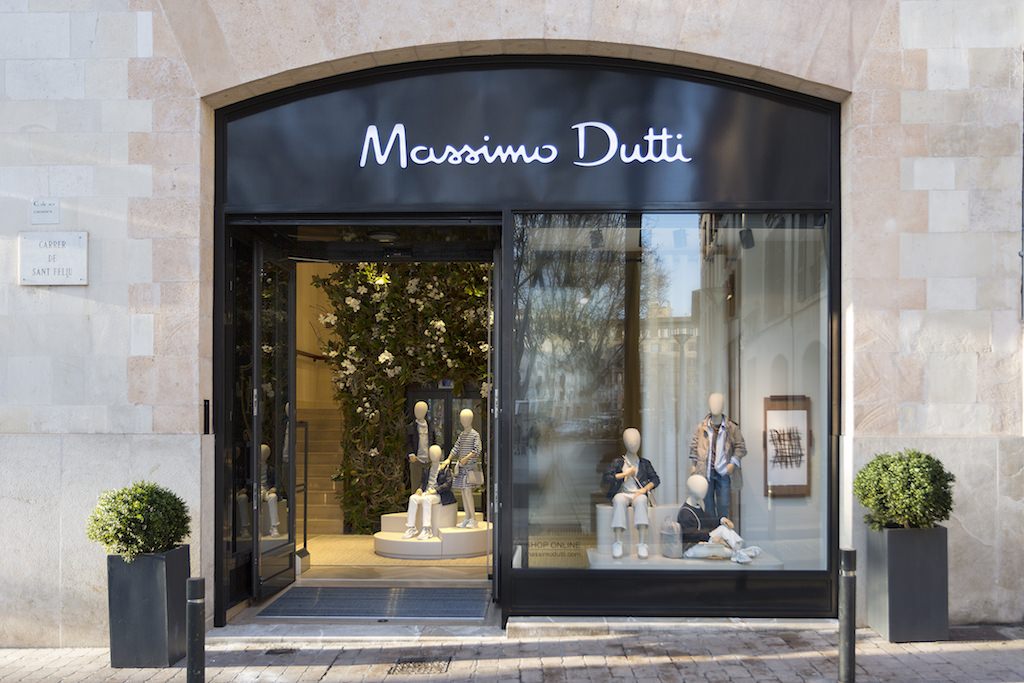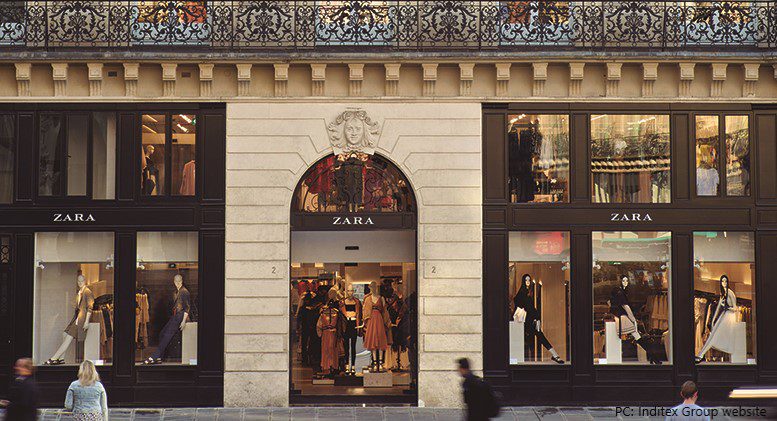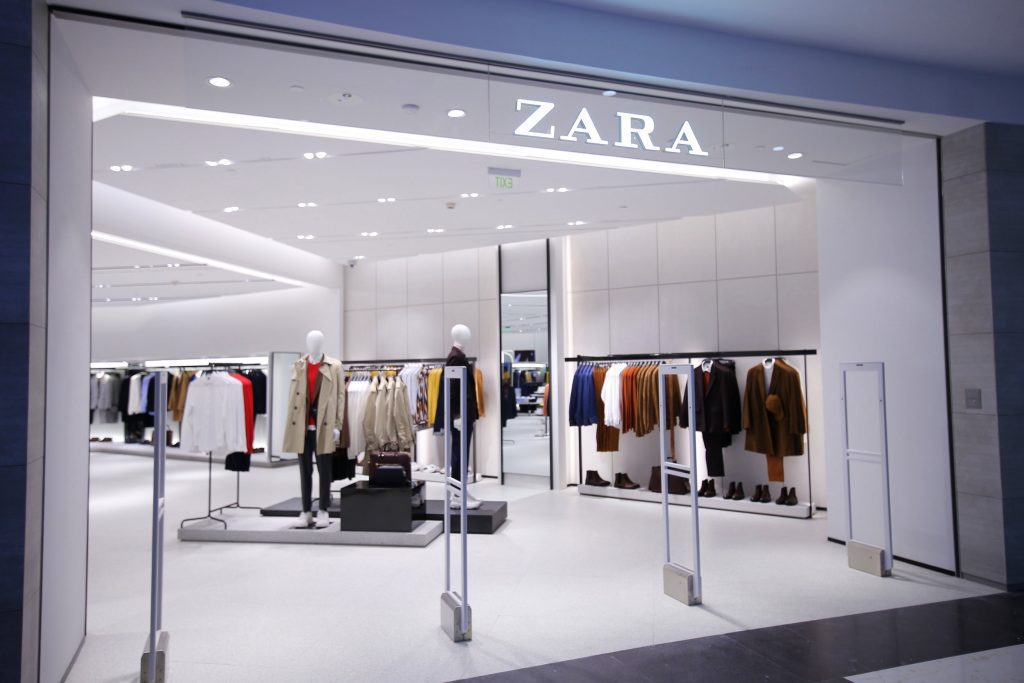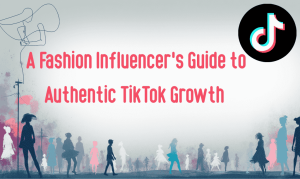Inditex, known for its fast-fashion empire, is a significant player in the global retail scene. Founded in Spain in 1963 by Amancio Ortega, the company has grown to encompass several well-known brands, including Zara, Massimo Dutti, and Pull&Bear. With over 5,600 stores across 93 markets, Inditex has made a name for itself by offering trendy clothing at affordable prices. However, its journey hasn’t been without challenges, especially regarding sustainability and labor practices. This article explores the various aspects of the Inditex company, from its business strategies to its impact on the fashion industry.
Key Takeaways
- Inditex operates a fast-fashion model, enabling rapid design and production cycles.
- The company’s vertical integration allows it to control every step of the supply chain, enhancing quality and responsiveness.
- Inditex’s marketing leverages digital platforms and social media to engage with consumers effectively.
- The company faces criticism over sustainability and labor practices but is actively working on initiatives to improve.
- Inditex’s future will depend on adapting to consumer trends while maintaining a commitment to sustainability.

Image: Zara
Overview of Inditex Company
History and Founding
So, Inditex, right? It’s not just some random clothing store. The whole thing started back in 1963 with Amancio Ortega. He began with a small workshop. Ortega saw that people wanted clothes that looked good but didn’t cost a fortune. That’s where his idea for a different kind of business came from. He wanted to control everything from making the clothes to selling them. This vertical integration became a big deal for Inditex later on.
Core Brands and Offerings
Inditex has a bunch of brands, not just Zara. Zara is probably the most famous. But there’s also Pull&Bear, Massimo Dutti, Bershka, Stradivarius, Oysho, and Zara Home. Each one aims at a different group of people. Zara is known for keeping up with trends super fast. Pull&Bear is more casual and targets younger folks. Massimo Dutti is a bit fancier. They all sell clothes, shoes, and accessories. It’s like Inditex wants to cover all the bases.
Global Presence
Inditex is everywhere. Seriously. They have stores in almost every country you can think of. From big cities to smaller towns, you can find an Inditex store. This strategic presence helps them reach lots of customers. They also have online stores, so people can shop even if there isn’t a store nearby. They’re a global retail giant, with a massive network of stores and a strong online presence.
Inditex’s success isn’t just about selling clothes. It’s about how they do it. They’re quick, they’re everywhere, and they have something for everyone. But they also face challenges, like being more sustainable and treating workers fairly. It’s a balancing act for sure.
Business Model and Strategies
Fast Fashion Approach
Inditex’s business model is pretty interesting, especially when you look at their fast fashion strategy. Basically, they’re all about quickly turning designs into actual clothes in stores. It’s not just about speed, though. They keep a close eye on what’s trending and what customers want, then they make it happen, fast. This means they can offer new stuff all the time, which keeps people coming back to see what’s new. It’s a pretty smart way to stay relevant in the ever-changing world of fashion.
Vertical Integration
One of the things that makes Inditex stand out is how much control they have over their whole process. This is called vertical integration. They handle everything from designing the clothes to making them and getting them into stores. This control lets them be super flexible and quick to respond to trends. It also helps them keep costs down and make sure everything is up to their standards. It’s like they’ve built their own fashion ecosystem, which gives them a big advantage.
Sustainability Initiatives
Inditex is also trying to be more sustainable, which is a big deal these days. They’re working on using eco-friendly practices and materials, reducing waste, and making sure their factories are safe and fair for workers. It’s not always easy, but they know it’s important for the future. They’re also looking at ways to recycle clothes and reduce their impact on the environment. It’s a work in progress, but they’re definitely making an effort.
Inditex is working towards a more sustainable future by focusing on circular economy principles, reducing their carbon footprint, and promoting ethical sourcing. They aim to create a positive impact on both the environment and the communities they operate in.
Here are some of their initiatives:
- Using more recycled materials.
- Reducing water consumption in production.
- Partnering with organizations to improve worker conditions.
Marketing Strategies of Inditex

Image: Massimo Dutti
Inditex has some really interesting marketing strategies that have helped them become a huge player in the fashion world. It’s not just about making clothes; it’s about how they get those clothes to you and make you want them. Let’s take a look at some of the key things they do.
Digital Marketing and Social Media
Inditex really gets how important being online is these days. Social media is a big deal for them, and they use it to talk to customers directly. They’ve got tons of followers across different platforms, which means they can show off new stuff and get feedback right away. They also use targeted ads to make sure the right people see their products. It’s all about making sure you see what you want to see. They also make sure their social media works well with their website and email marketing, so everything feels connected.
Inditex’s digital game is strong. They focus on good-looking visuals, getting people involved, and showing ads to the right folks. This helps them connect with people all over the world and keep customers coming back.
Collaborations and Partnerships
Inditex isn’t afraid to team up with other brands or designers. This helps them reach new audiences and keep things fresh. Think about it: a collaboration can bring together two different styles or fan bases, creating something totally new and exciting. These partnerships can create buzz and get people talking about the brand. It’s a smart way to stay relevant and appeal to different customer segments.
Innovative Store Design
Walking into an Inditex store is usually a pretty cool experience. They put a lot of thought into how their stores look and feel. They want you to have a good time while you’re shopping. They’re integrating their online and physical stores, allowing customers to effortlessly transition between the two. They might have self-checkout options or interactive fitting rooms to make things easier. Plus, they train their employees to be super helpful. It’s all about making shopping as easy and enjoyable as possible. By combining cutting-edge technology, a focus on sustainability, and a customer-centric approach, Inditex’s innovative store design sets a new standard for the retail industry.
Impact on the Fashion Industry
Economic Contributions
Inditex has a huge economic impact globally. It’s not just about selling clothes; it’s about jobs, taxes, and investments. The company’s presence in various countries boosts local economies through employment and supply chain activities. They’ve got a strategic presence in key markets, making their brands accessible to tons of customers. This international reach, combined with an efficient supply chain, lets Inditex offer competitive prices without cutting corners on quality or design.
Environmental Challenges
Okay, let’s be real: fast fashion isn’t exactly eco-friendly. The industry faces a lot of heat for its environmental footprint, and Inditex is no exception. There are concerns about waste, water usage, and the materials used to make clothes. Inditex is trying to address these issues with sustainability initiatives, but it’s a long road ahead. It’s a constant balancing act between offering trendy clothes and caring for the planet.
Social Responsibility Efforts
Inditex is trying to do better when it comes to social responsibility. They’re working on making their supply chain more transparent and ensuring fair labor practices. Plus, they’re involved in charitable stuff, like donating to environmental restoration and humanitarian aid. It’s not perfect, but it shows they’re thinking about more than just profits.
Inditex’s commitment extends beyond fashion. The company is demonstrating its commitment to social responsibility through charitable contributions. Recent donations include €3 million to The Great People’s Forest, a South Asian environmental restoration initiative, and €2.5 million to MSF’s humanitarian and refugee relief work. These contributions highlight Inditex’s well-rounded approach to business success, one that considers not just financial gain but also environmental and social well-being.
Consumer Engagement and Target Audience

Image: Zara
Demographic Segmentation
Inditex’s success isn’t just about clothes; it’s about knowing who they’re selling to. They’ve nailed demographic segmentation. Think about it: Zara, Bershka, Pull&Bear – each caters to a distinct age group, style preference, and income level. Zara aims for young professionals and adults who want trendy but sophisticated clothes. Bershka is all about the younger crowd, teenagers and young adults, with more casual and edgy styles. Pull&Bear targets a similar demographic but with a focus on relaxed, urban fashion. This clear segmentation allows Inditex to tailor its collections, marketing, and store environments to perfectly match each group’s needs. It’s not a one-size-fits-all approach; it’s a carefully crafted strategy to capture different slices of the fashion market. They use consumer sentiment analysis to understand their customers better.
Brand Positioning
Inditex has mastered the art of brand positioning. Each of its brands occupies a unique space in the consumer’s mind. Zara is synonymous with fast fashion that’s both stylish and accessible. Pull&Bear is known for its laid-back, youthful vibe. Massimo Dutti offers a more premium, sophisticated experience. This clear positioning helps consumers quickly identify which brand aligns with their personal style and values. It’s not just about selling clothes; it’s about selling a lifestyle and an identity. By carefully crafting each brand’s image, Inditex avoids cannibalization and maximizes its appeal across a wide range of consumers. They focus on brand building to create a strong image.
Customer Experience
Customer experience is where Inditex really shines. From the moment you walk into a store to browsing online, every touchpoint is designed to be seamless and enjoyable. Stores are strategically located in prime shopping areas, and the layout is designed to encourage browsing and discovery. Online, the website and app are user-friendly, with easy navigation and clear product information. But it’s not just about the physical and digital spaces; it’s about the people. Inditex invests in training its staff to provide excellent customer service, creating a welcoming and helpful environment. They also encourage brand ambassadors to promote their products.
Inditex understands that a happy customer is a loyal customer. By prioritizing the customer experience, they create a strong emotional connection with their brands, leading to repeat purchases and positive word-of-mouth referrals. It’s not just about selling clothes; it’s about building relationships and creating a community of loyal fans.
Challenges and Criticisms
Sustainability Concerns
Inditex, like many fast fashion giants, faces significant scrutiny regarding its environmental impact. The sheer volume of clothing produced annually contributes to textile waste, pollution from manufacturing processes, and high water consumption. While Inditex has launched initiatives like the “Join Life” collection, these efforts are often criticized as greenwashing – appearing more eco-friendly than they actually are. The challenge lies in truly minimizing the environmental footprint across their vast supply chain, from raw material sourcing to disposal.
It’s a tough balancing act. Consumers want affordable, trendy clothes, but the planet can’t sustain the current rate of production and consumption. Inditex needs to find innovative ways to reduce waste, use sustainable materials, and promote circularity.
Labor Practices
Another major area of concern revolves around labor practices within Inditex’s supply chain. While the company has a Code of Conduct for External Manufacturers and Suppliers, ensuring compliance across a global network of factories is a constant challenge. Allegations of low wages, unsafe working conditions, and excessive working hours persist. Transparency and independent audits are crucial to verifying that workers are treated fairly and ethically.
Here are some key areas of focus:
- Ensuring fair wages and benefits.
- Providing safe and healthy working conditions.
- Preventing child labor and forced labor.
Market Competition
The fashion industry is fiercely competitive, with new brands emerging constantly and established players vying for market share. Inditex faces pressure from both traditional retailers and online disruptors. To maintain its position, Inditex must continue to innovate, adapt to changing consumer preferences, and differentiate itself from competitors. This includes investing in technology, enhancing the customer experience, and refining its brand positioning.
Future Outlook for Inditex
Adapting to Consumer Trends
Inditex has always been pretty good at spotting what people want to wear, and that’s not about to change. The future for them means staying flexible and quick to respond to new styles and shopping habits. They’re putting money into understanding what younger shoppers want, especially when it comes to shopping online and using social media. This includes making their websites and apps easier to use and offering more personalized shopping experiences. The sportswear market growth reflects consumer demand and Inditex knows it.
- Investing in data analytics to predict trends.
- Expanding online personalization features.
- Testing new retail concepts in flagship stores.
Technological Innovations
Technology is a big deal for Inditex moving forward. They’re investing a lot in things like better inventory management systems and using AI to make their supply chain even more efficient. This isn’t just about making things faster; it’s also about reducing waste and making sure they have the right products in the right stores at the right time. They’re also looking at ways to use technology to improve the shopping experience, like self-checkout options and interactive fitting rooms. Inditex is making strategic moves to solidify its position in the fashion retail landscape.
Inditex is exploring augmented reality (AR) and virtual reality (VR) to create more immersive shopping experiences. Imagine trying on clothes virtually or seeing how furniture looks in your home before you buy it. These technologies could change how people shop and help Inditex stand out from the competition.
Commitment to Sustainability
Sustainability is no longer optional; it’s a must. Inditex knows this and is making big promises to be more eco-friendly. This includes using more recycled materials, reducing their carbon footprint, and making sure their factories treat workers fairly. It’s a big challenge, but it’s also a chance for Inditex to show they care about the planet and its people. They’ve pledged to transition all their textile products to materials with a reduced environmental impact by 2030.
Here’s a quick look at their sustainability goals:
| Goal | Target Year | Description |
|---|---|---|
| Reduced Emissions | 2030 | Cut emissions by more than half. |
| Carbon Neutrality | 2040 | Achieve complete carbon neutrality. |
| Sustainable Textiles | 2030 | Transition all textile products to materials with a reduced environmental impact. |
Final Thoughts on Inditex’s Influence and Future
In wrapping up our look at Inditex, it’s clear that this company has made a significant mark on the global fashion scene. With its unique approach to fast fashion, it has managed to stay relevant and appealing to a wide range of customers. However, it’s not all smooth sailing. The brand faces ongoing scrutiny regarding its environmental practices and labor conditions. While Inditex is taking steps to improve in these areas, the road ahead will require careful navigation. As consumer preferences shift towards sustainability, Inditex will need to balance its fast-paced model with a genuine commitment to ethical practices. Looking forward, the company’s ability to adapt and innovate will be key to maintaining its position as a leader in the fashion industry.
Frequently Asked Questions
What is Inditex known for?
Inditex is famous for being the largest fast-fashion retailer in the world. It owns popular brands like Zara, Massimo Dutti, and Pull&Bear.
How did Inditex start?
Inditex was founded in 1963 by Amancio Ortega in Spain, starting as a small clothing workshop. Over time, it grew into a major global fashion company.
What makes Inditex’s business model unique?
Inditex uses a fast fashion model, which means it quickly designs, produces, and sells trendy clothes. This allows them to respond rapidly to changing fashion trends.
How does Inditex address sustainability?
Inditex is working on sustainability by investing in eco-friendly practices and improving transparency in its supply chain to reduce environmental impacts.
Who are Inditex’s main customers?
Inditex targets a wide range of customers, focusing on young, fashion-conscious individuals who want stylish clothes at affordable prices.
What challenges does Inditex face?
Inditex faces challenges like criticism over labor practices, environmental issues, and competition from other fashion brands.

Peyman Khosravani is a global blockchain and digital transformation expert with a passion for marketing, futuristic ideas, analytics insights, startup businesses, and effective communications. He has extensive experience in blockchain and DeFi projects and is committed to using technology to bring justice and fairness to society and promote freedom. Peyman has worked with international organizations to improve digital transformation strategies and data-gathering strategies that help identify customer touchpoints and sources of data that tell the story of what is happening. With his expertise in blockchain, digital transformation, marketing, analytics insights, startup businesses, and effective communications, Peyman is dedicated to helping businesses succeed in the digital age. He believes that technology can be used as a tool for positive change in the world.











